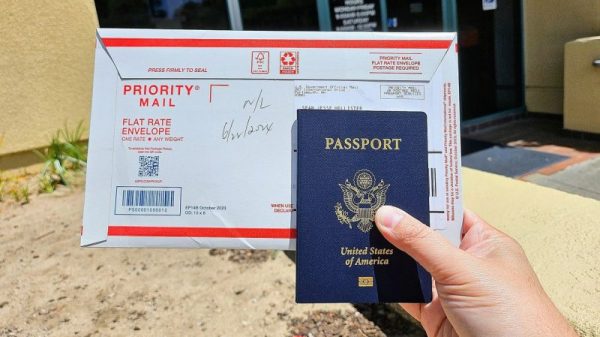The U.S. military had a long history of honoring traitors.
Then last year, a congressionally created panel recommended new designations for nine Army bases, including Fort Lee in Virginia, that were named after Confederate officials. Now, it is the only Army facility that carries the name of a person still alive: retired Lt. Gen. Arthur J. Gregg. It’s also the only Army installation named for an African American — in this case two, as its new name also honors Lt. Col. Charity Adams Earley.
Until April when the base was officially re-designated, it celebrated the most prominent Confederate turncoat, Robert E. Lee.
“Of the eight Virginians who were West Point graduates and Army colonels at the outbreak of the Civil War, only Lee chose to fight against the United States,” said the government’s Naming Commission’s report. “The main difference between these eight was that Lee and his family enslaved other humans. At the outbreak of the war, the Lees of Arlington owned approximately 200 enslaved people. … In the final year of the war alone, Lee’s armies killed or wounded at least 127,000 U.S. servicemen fighting for the nation.”
Fittingly, that base, about 30 miles south of Richmond, was renamed as Fort Gregg-Adams to honor two descendants of enslaved people. This is the first time in “modern history,” according to the Pentagon, that an Army base is named for a living person.
Adams attained the highest rank women, who faced open gender discrimination, held during World War II, save one full colonel who led the Women’s Army Corps. Adams commanded the first unit of Black women overseas during the war. Her postal unit based in England delivered mail to and from almost 7 million soldiers fighting in Europe.
“Her effectiveness was made clear,” the report explained, “when it took three units of men to replace her battalion after they disbanded.” She died in 2002.
Gregg, who enlisted in 1946 and retired in 1981, is a robust 95-year-old, with a sharp mind and memory. His military bearing intact, he walks without a cane and still drives, despite objections from his daughter, Alicia Collier. Another daughter, Sandra, died in 2009. She was a Washington Post reporter and past president of the Washington Association of Black Journalists. His “dear wife, Charlene,” died in 2006. He has three grandchildren.
The youngest of nine children, Gregg grew up with no indoor plumbing or electricity, doing farm chores in Florence County, S.C., until age 13 when he moved to Newport News, Va., to live with his oldest brother and attend high school. The nearest high school for Black students in South Carolina was 10 miles away, “the first six of the 10 on dirt roads,” he recalled, “and no bus transportation was provided for Black students.”
He didn’t know then that the Army would create an award for logistics innovation and excellence in 2015 and name it after its first recipient — Gregg, whom the Defense Department called “one of the Army’s great logistics leaders of the 20th century.”
I spoke with Gregg, sharp in a dress shirt and red tie, under a blue blazer with a four-point red pocket square and a “Soldier for Life” lapel pin, in his Dumfries, Va., home, decorated with mementos of his career and items reflecting his posting in Japan.
Insider: Did it bother you as an American soldier that U.S. military bases were named for Confederate soldiers?
Gregg: Oh, yes. I think most members of the military and most Americans felt it was inappropriate.
Did you feel like the United States was honoring traitors?
Well, it did honor men who, in the case of Fort Lee, who resigned his commission when the country needed him most and joined and led the enemy forces. There could not be a worse example.
You first went to Fort Lee as a new second lieutenant, after attending Officer Candidate School, in 1950. What was your assignment?
My first job was an assistant platoon leader. Normally, as a lieutenant, I would have been a platoon leader. But all the Black officers were assigned to one battalion. And we had more Black officers than we had openings for them.
So, had you been a White second lieutenant, you would have been a full platoon leader?
Oh, yes. … We had two armies, one Black, one White. … You generally stayed within your own community. You could not use the officer’s club. [Later, Gregg was among the first Black officers to integrate the club.]
What was your job then?
I came in the Army as a trained medical laboratory technician, hoping that I would get experience as an Army medical laboratory technician. But after basic training, I was assigned to the Army of occupation in Germany and there were no laboratories with Black staff. So, I did not get a job as a medical laboratory technician. I became a supply sergeant, and that launched my career in logistics. And I remained in logistics for my entire Army career and I retired from the Army from the position of the Army’s deputy chief of staff for logistics, the senior staff position.
Other than that early period in the Army, do you think race held you back?
No. I think that I was treated fairly in assignments and promotions.
Is there any assignment that stands out as your favorite?
I enjoyed all my Army assignments. But the one that was most rewarding for me was commanding a battalion in Vietnam in 1966-67. … It was a time that we were building a great logistics base there. I deployed to Vietnam with a standard battalion of about 700 officers and men. We grew to 18 companies and eight detachments with 3,600 officers and men, I believe the biggest battalion in the United States Army. And I tell you, working with those young men and officers to build a logistics base there was a very rewarding assignment.
Are there other assignments that were particularly notable?
We operated shopping centers in Germany, Spain, England, Italy, Turkey and Greece, and for a short time, Ethiopia. We have the restaurants, the retail stores, the 7-Eleven kind of operations …
Commanding a battalion in Vietnam, commanding the Army and Air Force exchange system in Europe were the two that I would point out as the high points of my professional satisfaction. And then a few years later, I was the director for logistics for the Joint Chiefs of Staff, I reported directly to the chairman of the Joint Chiefs of Staff. It was a time that we were concerned about our ability to deploy forces and equipment to wherever we needed them in the world. And we were able to do some really innovative things like acquire roll-on, roll-off ships where you could drive the tanks right on a ship, drive the trucks right on the ship and drive them off at its foreign destination. I felt good about that.
Among the things Gregg misses most about his military career is getting dressed for work.
“I felt good in my uniform.”
The U.S. military had a long history of honoring traitors.
Then last year, a congressionally created panel recommended new designations for nine Army bases, including Fort Lee in Virginia, that were named after Confederate officials. Now, it is the only Army facility that carries the name of a person still alive: retired Lt. Gen. Arthur J. Gregg. It’s also the only Army installation named for an African American — in this case two, as its new name also honors Lt. Col. Charity Adams Earley.
Until April when the base was officially re-designated, it celebrated the most prominent Confederate turncoat, Robert E. Lee.
“Of the eight Virginians who were West Point graduates and Army colonels at the outbreak of the Civil War, only Lee chose to fight against the United States,” said the government’s Naming Commission’s report. “The main difference between these eight was that Lee and his family enslaved other humans. At the outbreak of the war, the Lees of Arlington owned approximately 200 enslaved people. … In the final year of the war alone, Lee’s armies killed or wounded at least 127,000 U.S. servicemen fighting for the nation.”
Fittingly, that base, about 30 miles south of Richmond, was renamed as Fort Gregg-Adams to honor two descendants of enslaved people. This is the first time in “modern history,” according to the Pentagon, that an Army base is named for a living person.
Adams attained the highest rank women, who faced open gender discrimination, held during World War II, save one full colonel who led the Women’s Army Corps. Adams commanded the first unit of Black women overseas during the war. Her postal unit based in England delivered mail to and from almost 7 million soldiers fighting in Europe.
“Her effectiveness was made clear,” the report explained, “when it took three units of men to replace her battalion after they disbanded.” She died in 2002.
Gregg, who enlisted in 1946 and retired in 1981, is a robust 95-year-old, with a sharp mind and memory. His military bearing intact, he walks without a cane and still drives, despite objections from his daughter, Alicia Collier. Another daughter, Sandra, died in 2009. She was a Washington Post reporter and past president of the Washington Association of Black Journalists. His “dear wife, Charlene,” died in 2006. He has three grandchildren.
The youngest of nine children, Gregg grew up with no indoor plumbing or electricity, doing farm chores in Florence County, S.C., until age 13 when he moved to Newport News, Va., to live with his oldest brother and attend high school. The nearest high school for Black students in South Carolina was 10 miles away, “the first six of the 10 on dirt roads,” he recalled, “and no bus transportation was provided for Black students.”
He didn’t know then that the Army would create an award for logistics innovation and excellence in 2015 and name it after its first recipient — Gregg, whom the Defense Department called “one of the Army’s great logistics leaders of the 20th century.”
I spoke with Gregg, sharp in a dress shirt and red tie, under a blue blazer with a four-point red pocket square and a “Soldier for Life” lapel pin, in his Dumfries, Va., home, decorated with mementos of his career and items reflecting his posting in Japan.
Insider: Did it bother you as an American soldier that U.S. military bases were named for Confederate soldiers?
Gregg: Oh, yes. I think most members of the military and most Americans felt it was inappropriate.
Did you feel like the United States was honoring traitors?
Well, it did honor men who, in the case of Fort Lee, who resigned his commission when the country needed him most and joined and led the enemy forces. There could not be a worse example.
You first went to Fort Lee as a new second lieutenant, after attending Officer Candidate School, in 1950. What was your assignment?
My first job was an assistant platoon leader. Normally, as a lieutenant, I would have been a platoon leader. But all the Black officers were assigned to one battalion. And we had more Black officers than we had openings for them.
So, had you been a White second lieutenant, you would have been a full platoon leader?
Oh, yes. … We had two armies, one Black, one White. … You generally stayed within your own community. You could not use the officer’s club. [Later, Gregg was among the first Black officers to integrate the club.]
What was your job then?
I came in the Army as a trained medical laboratory technician, hoping that I would get experience as an Army medical laboratory technician. But after basic training, I was assigned to the Army of occupation in Germany and there were no laboratories with Black staff. So, I did not get a job as a medical laboratory technician. I became a supply sergeant, and that launched my career in logistics. And I remained in logistics for my entire Army career and I retired from the Army from the position of the Army’s deputy chief of staff for logistics, the senior staff position.
Other than that early period in the Army, do you think race held you back?
No. I think that I was treated fairly in assignments and promotions.
Is there any assignment that stands out as your favorite?
I enjoyed all my Army assignments. But the one that was most rewarding for me was commanding a battalion in Vietnam in 1966-67. … It was a time that we were building a great logistics base there. I deployed to Vietnam with a standard battalion of about 700 officers and men. We grew to 18 companies and eight detachments with 3,600 officers and men, I believe the biggest battalion in the United States Army. And I tell you, working with those young men and officers to build a logistics base there was a very rewarding assignment.
Are there other assignments that were particularly notable?
We operated shopping centers in Germany, Spain, England, Italy, Turkey and Greece, and for a short time, Ethiopia. We have the restaurants, the retail stores, the 7-Eleven kind of operations …
Commanding a battalion in Vietnam, commanding the Army and Air Force exchange system in Europe were the two that I would point out as the high points of my professional satisfaction. And then a few years later, I was the director for logistics for the Joint Chiefs of Staff, I reported directly to the chairman of the Joint Chiefs of Staff. It was a time that we were concerned about our ability to deploy forces and equipment to wherever we needed them in the world. And we were able to do some really innovative things like acquire roll-on, roll-off ships where you could drive the tanks right on a ship, drive the trucks right on the ship and drive them off at its foreign destination. I felt good about that.
Among the things Gregg misses most about his military career is getting dressed for work.
“I felt good in my uniform.”























